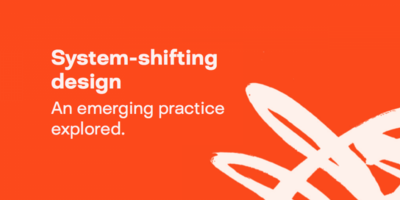Teignbridge Council

Every day, eight people in England die from a fall. Elderly people in particular are vulnerable to such accidents, and many less-serious trips and falls go unreported.
East Teignmouth in Teignbridge has a higher than average ageing population, with 7% of residents aged over 85-years-old. Trips and falls are the most common cause of death in the over-65s in the area.
Teignbridge Council wanted to be more proactive in its fight to reduce the instances of trips and falls across its population of older residents. This drive would reduce hospital admissions and also lower the demand on Teignbridge’s Disabled Facility Grant budget, which is overspent each year, with an anticipated £1m-plus required to meet need.
The overall care that people in later life receive across Teignbridge also needed to include higher levels of engagement with all health professionals, from GPs to hospital staff.
Challenge
The council could clearly see that there were issues to address, and that a well-designed approach to the healthcare and wellbeing of their older residents could be developed to focus on the major issue of trips and falls.
Lacking in design experience, they asked Design Council to help them develop a new design-led programme of support and advice to deliver the tangible and lasting results needed in the community.
“One key objective was to use good design to bring key partners together and to ‘sell’ the design process to work on new types of solutions,” said Amanda Pujol, Teignbridge Council’s Business Manager for Housing and Health. “By working together with experienced designers we hoped to give staff ‘permission’ to think differently, and to be more innovative to solve problems.”
What we did
The project began with a series of workshops which gave the housing services team an opportunity to explore new collaborative ways of working with the voluntary sector and social care. The next step was to perform an ‘opportunity review’, which highlighted disconnects in the current service and opportunities to correct them. It was here that a ‘falls pathway’ was created. This mapped out everyone that a person would and should come into contact with after a fall, and examined how this process could be improved for the patient.
Teignbridge and Design Council interviewed eight older residents who had experienced falls and captured their stories in a series of videos. These stories helped the stakeholders to better understand why falls happen, what happens after a fall and how it makes people feel. The testimonials were evidence enough that falls can be literally ‘life-changing’, and the council decided to undertake a radical new approach to prevent them.
Gavin Pryke, Design Council's Design Associate deployed on the project, said: “The specific challenges of this project needed to be clearly illustrated to the council and potential users of the service, so we took a different approach: a user-centred methodology that involved people being visual and collaborative with both the problems and potential solutions.”
Being visual was a driving factor as this project progressed. Understanding the pathways that the trips and falls hub would support, and how lasting communications would be handled on an ongoing basis, was central to our approach. Here, the aid of a communications agency was vital. Three communications agencies made pitches before Made Open (Sea Communications at the time) was chosen.
Kathryn Woolf, Director of Made Open, explained: “Gavin had done a great job in helping Teignbridge Council Housing team understand how the design process could help them tackle their challenge.
“Made Open was able to complement Design Council’s work by offering on-the-ground practical design support which the project needed to generate real, tangible outcomes.”
Our impact
I now know what I can do to reduce my falling and will be lifting rugs and arranging for a handrail to be fitted.
Local resident at Alice Cross Centre
The information gathered helped everyone associated with the project to understand the falls pathway, the various services that a person may come into contact with and how they respond.
Having decided that the previous method of leafleting was largely being ignored, more striking, fun and interactive awareness campaigns were trialled in GP surgeries across the area.
These included an LP player installation with information about falls on the ‘record sleeves’ called ‘Sound Information’, a mock crime scene with hard-hitting statistics about falls and a more light-hearted campaign suggesting people apply bubble wrap to their homes. The aim of all three trials was to increase patient requests for further advice by raising awareness and helping them understand the impact of falls.
Teignbridge Council’s Amanda Pujol explained the success the project has had: “Staff members now apply the design principles learned to other processes and areas in the department. For example, we now acknowledge that people understand and remember things best when they are told as part of a story.”
Services were then prototyped under the name Fall Proof. Three areas were identified, including an online photo submission service which identifies hazards in users’ homes, and a physical home assessment package which can recommend how to make homes safer. You can read more about Fall Proof here.
“Audiences are more likely to engage if we use emotion and make it personal. The relationships we have with the various health agencies had resulted in much greater collaborative working and we have put in bids for funding to carry on the work we started with Design Council.”
Subscribe to our newsletter
Want to keep up with the latest from the Design Council?

